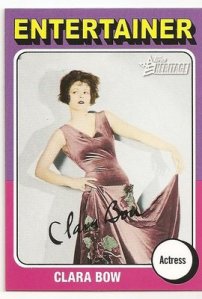 Harold Meadows (Harold Lloyd) is an apprentice to his uncle, who is the town tailor in Little Bend, California. Poor Harold has made it his life’s mission to study that most elusive of all species, women. His problem, however, is that he develops a debilitating stutter if forced to interact with them. He must content himself with observing from afar, and assembles his notes into a guide for the modern man called The Secret of Making Love. Armed with the completed manuscript, Harold makes his way by train to the big city in order to sell his work to a publisher. While on the train, however, Harold meets the adorable Mary Buckingham (Jobyna Ralston). Harold saves Mary’s pet dog from being seized by the train conductor, and the two are obviously smitten.
Harold Meadows (Harold Lloyd) is an apprentice to his uncle, who is the town tailor in Little Bend, California. Poor Harold has made it his life’s mission to study that most elusive of all species, women. His problem, however, is that he develops a debilitating stutter if forced to interact with them. He must content himself with observing from afar, and assembles his notes into a guide for the modern man called The Secret of Making Love. Armed with the completed manuscript, Harold makes his way by train to the big city in order to sell his work to a publisher. While on the train, however, Harold meets the adorable Mary Buckingham (Jobyna Ralston). Harold saves Mary’s pet dog from being seized by the train conductor, and the two are obviously smitten.
When Harold finally arrives at the publisher, his manuscript falls into the hands of the office personnel, who find the whole idea of the guide to be uproarious fun. The publisher doesn’t see the market potential in the book, and sends Harold away with his hopes shattered. It is only after Harold’s departure that the publisher realizes the comic possibility of such a title, and sends him a check for $3,000 in advance royalties. Meanwhile, Harold and Mary are in the haze of infatuation, and bump into each other once again. Even though they are clearly smitten with one another, Harold is convinced that he is a nobody, undeserving of Mary’s love. He pretends to lose interest in her, and Mary returns home, defeated, and agrees to marry the slimy Ronald De Vore (Carlton Griffith). Unbeknownst to Mary, Ronald already has a wife that he keeps hidden away in Little Bend.
 Harold knows the woman who is Ronald’s wife, and the two of them happen to see a newspaper notice announcing Mary’s imminent marriage. Horrified, Harold leaps into action and begins a lengthy chase scene when he frantically uses any means necessary (at one point comandeering an electric streetcar) to make his way to the Buckingham estate before it’s too late. The wedding and the chase are shown one step at a time, each inching closer to the finale. Harold leaps into the ceremony just before the priest is about to announce Mary and Ronald man and wife, and spirits Mary away in true “cave man” style. Of course, all ends well for Harold and Mary.
Harold knows the woman who is Ronald’s wife, and the two of them happen to see a newspaper notice announcing Mary’s imminent marriage. Horrified, Harold leaps into action and begins a lengthy chase scene when he frantically uses any means necessary (at one point comandeering an electric streetcar) to make his way to the Buckingham estate before it’s too late. The wedding and the chase are shown one step at a time, each inching closer to the finale. Harold leaps into the ceremony just before the priest is about to announce Mary and Ronald man and wife, and spirits Mary away in true “cave man” style. Of course, all ends well for Harold and Mary.
Girl Shy is another delightful romp in the cannon of Lloyd films, and is his second pairing with Ralston. Ralston came in as Lloyd’s choice to replace Mildred Davis as his recurring leading lady. Their palpable chemistry produces a wonderful emotional depth that only adds to Girl Shy‘s appeal. After some brief internet browsing, it does not seem that much is known about Ralston’s life. She was born in South Pittburg, Tennessee in 1899 to stage struck parents who encouraged her to find a life on the stage. After a brief stint on Broadway, comedian Max Linder convinced her to head West to Hollywood and carve out a career for herself in the burgeoning film industry. By 1923, she achieved enough notice to be named one of that year’s selection of WAMPAS Baby Stars, an honor that Clara Bow would also go on to win in 1924. With the WAMPAS award under her belt, she starred with Lloyd in Why Worry? that same year, which would be the first of their six feature-length pairings.
 Privately, Ralston was married two times — the first to a childhood sweetheart, and the second to fellow actor Richard Arlen. Ralston met Arlen on the set of Wings (1927), the classic WWI aviation spectacle co-starring Arlen, Clara Bow and Charles “Buddy” Rogers. In Wings, Ralston plays Sylvia Lewis, the girl that both Arlen and Rogers pine for while ignoring Bow as the “girl next door.” Ralston and Arlen had only one child together, future actor Richard Arlen, Jr. Ralston ended her film career by 1930 after making only two talkies because she had a noticeable lisp. She and Arlen finally divorced in 1945, and for the next 22 years she suffered from chronic rheumatism and (later) a series of strokes. She died at the Motion Picture Country Home in 1967 at the age of 67.
Privately, Ralston was married two times — the first to a childhood sweetheart, and the second to fellow actor Richard Arlen. Ralston met Arlen on the set of Wings (1927), the classic WWI aviation spectacle co-starring Arlen, Clara Bow and Charles “Buddy” Rogers. In Wings, Ralston plays Sylvia Lewis, the girl that both Arlen and Rogers pine for while ignoring Bow as the “girl next door.” Ralston and Arlen had only one child together, future actor Richard Arlen, Jr. Ralston ended her film career by 1930 after making only two talkies because she had a noticeable lisp. She and Arlen finally divorced in 1945, and for the next 22 years she suffered from chronic rheumatism and (later) a series of strokes. She died at the Motion Picture Country Home in 1967 at the age of 67.
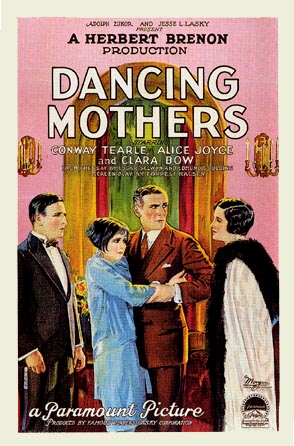

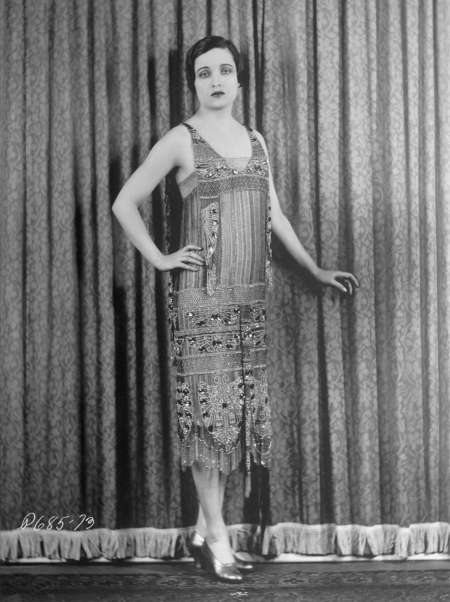

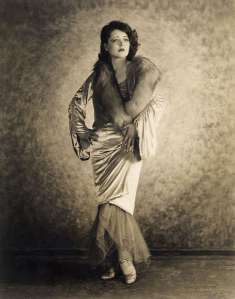 enjoyed Stenn’s examination of one of the most “neglected and underrated of all film actresses” – a sentiment not to be taken lightly coming from the likes of Louise Brooks. Aside from the scandals and revelations that wracked Clara’s life, there were a few lighter details of note that I found quite interesting:
enjoyed Stenn’s examination of one of the most “neglected and underrated of all film actresses” – a sentiment not to be taken lightly coming from the likes of Louise Brooks. Aside from the scandals and revelations that wracked Clara’s life, there were a few lighter details of note that I found quite interesting: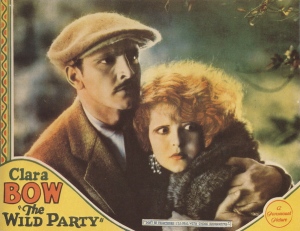 In the wake of this Clara Bow high, I tried to find some of her other films through the
In the wake of this Clara Bow high, I tried to find some of her other films through the  What is “IT”? According to author Elinor Glyn, “It” is a “self-confidence and indifference to whether you are pleasing or not, and something in you that gives the impression that you are not at all cold.” The fabulous embodiment of it is the vivacious Clara Bow, star of that aptly titled 1927 hit film.
What is “IT”? According to author Elinor Glyn, “It” is a “self-confidence and indifference to whether you are pleasing or not, and something in you that gives the impression that you are not at all cold.” The fabulous embodiment of it is the vivacious Clara Bow, star of that aptly titled 1927 hit film.
